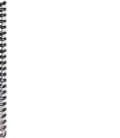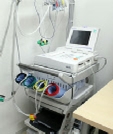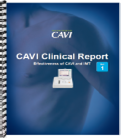


Cavi Clinical rapport
The importance of early detection of functional changes of the arteriosclerosis by
comparing between CAVI, coronary angiography and carotid echography of the organic
and functional changes of the arteriosclerosis
Ankle-brachial index and arterial stiffness
They will be measured using Vasera device VS-1500® (Fukuda Denshi). For the study,
the lowest ankle-brachial index obtained will be considered. The pulse wave velocity
(PWV) will be calculated, as well as Cardio Ankle Vascular Index (CAVI), which gives
a more accurate calculation of the atherosclerosis degree. CAVI integrates cardiovascular
elasticity derived from the aorta to the ankle pulse velocity through an oscillometric
method and it is used as a good measure of vascular stiffness






Establishing baseline criteria of cardio-ankle vascular index as a new indicator
of Arteriosclerosis: a cross-sectional study
Results: Average age-specific baseline scores of CAVI in the CVD risk-free group
linearly increased in both genders as their age increased. Average age-specific baseline
scores of CAVI in the CVD risk-free group were significantly greater among men than
among women.
Conclusions: The baseline CAVI scores from the CVD risk-free group are useful for
future studies as control values. The CAVI method is a useful tool to screen persons
with moderate to advanced levels of arteriosclerosis.
Cardio-Ankle Vascular Index in Heterozygous Familial Hypercholeste rolemia
Aim: The cardio-ankle vascular index (CAVI) is a new non-invasive marker of arterial
stiffness and atherosclerosis. The purpose of this study was to compare CAVI in patients
with heterozygous familia! hypercholesterolemia (FH) and in healthy controls.
Results: CAVI in FH patients was significandy higher (8.0 ± 1.4) than in healthy
subjects (7.5 ±- 1.3) p=0.002; however, age, sex and BMI adjusted CAVI did not differ
significandy (p=0.061) between the FH group (7.5, CI: 7.3; 7.7) and control group
(7.7, CI: 7.6; 7.7).




Cardio-AnkleVascular Index is a Candidate Predictor of Coronary Atherosclerosis
Background Recently, arterial stiffness parameter called cardio-ankle vascular index
(CAVI) has been developed. In the current study, using coronary angiographic (CAG)
findings, the usefulness of CAVI as a marker of the severity of coronary atherosclerosis
was compared with that of carotid atherosclerosis parameters obtained from high-resolution
B-mode ultrasonography.
A stepwise ordinal logistic regression analysis using mean IMT, maximum IMT, plaque
score and CAVI as independent variables identified only CAVI as positively related
to the severity of coronary atherosclerosis. The area under the receiver operating
characteristic curve defined by CAVI was the greatest.




Cardiovascular Division Department of Medicine University of Minnesota Minneapolis
Noninvasive measurements of arterial stiffness
Repeatability and interrelationships with endothelial function and arterial morphology
measures



Internationale wetenschappelijke studies hebben aangetoond dat de CAVi Index een
wezenlijke bijdrage levert aan het vroegtijdige constateren van vaatproblemen. Hieronder
treft u een aantal wetenschappelijke studies aan waarin wordt aangetoond welke resultaten
zijn behaald.






